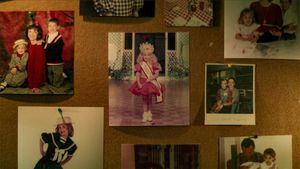Memorabilia auctions have become quite the buzz, captivating both collectors and casual fans alike. Recently, auctions have showcased items with rich histories and fascinating stories, drawing enthusiastic bids for various collectibles ranging from rare celebrity items to significant historical artifacts.
One remarkable event took place at the Bristol Zoological Society, where memorabilia from the now-closed Bristol Zoological Gardens was sold. This auction featured over 300 items, including vintage signs, sculptures, and photographs. Surprisingly, the event managed to raise £161,600, significantly exceeding its initial target of £50,000. The remarkable amount reflects not only the value of the collected items but also the emotional connection many had with the zoo, which had been part of the community for 186 years before shutting down operations.
The auction was held over two days, with one of the standout pieces being a yellow enamel zoo sign, which fetched £16,000. Vintage Victorian benches from the zoo sold for £25,000, and the original stone bust of Alfred the Gorilla, often recognized by visitors, went for £9,000. Auctioneer Andrew Stowe noted, "This [bust] means so much to so many people.” The emotional significance tied to such pieces is palpable, as many attendees shared their childhood memories associated with these artifacts.
Hannah Windross, director of the Bristol Zoological Society, stated, "We spent a long time cataloguing to make sure we preserved the most important bits" before the sale. This careful curation enabled fans to secure their piece of Bristol Zoo history, allowing them not just to own memorabilia but also to contribute to future conservation efforts, as proceeds from the auction are set to support the new Bristol Zoo Project.
While the auction attracted numerous bids and created excitement, it also faced challenges. A group of shareholders, led by campaigner Tom Jones, attempted to halt the memorabilia sale, arguing it was premature until the zoo's site was officially sold for development. This legal push highlights the passionate connection communities hold with their local history. Yet, the zoo's representatives countered this claim, emphasizing how legal battles could detract from conservation efforts.
Meanwhile, thousands were also spent at another recent auction, where collectors bid on items once owned by the legendary Marilyn Monroe and pop titan Elton John. At this Art and Anarchy auction, Monroe's blouse sold for £1,650, and John's flamboyant leather platforms went for £1,000. John Rolfe, the director of the auction, described the collection’s origin as “like Madame Tussauds on acid.” The unique acquisition process involved clearing out mannequins dressed as pop icons from museum collections, offering bidders exclusive insights and connection to celebrity culture.
The auction featured multiple intriguing items, including various pieces linked to punk history, artworks by Ian Dury, and memorabilia associated with notorious figures. The excitement surrounding these items isn't just about their market value; it's about the stories and histories they carry.
Across the globe, other auctions have begun to exhibit similar themes, offering collectors rare insights from the past. For example, Banksy's artistic contributions have also risen sharply as memorabilia associated with Dismaland, his temporary art installation, sold well, showcasing the intertwining of contemporary art and celebrity.
The merging of celebrity culture with memorabilia auctions creates excitement for bidders and sparks curiosity among novices. Questions inevitably arise about authenticity, provenance, and the emotional ties connected to these historical items. Collectors attend these events not just to bid, but also to be part of the stories behind the memorabilia.
Art and historical collectible auctions appear increasingly popular, as they allow fans to connect more deeply with their favorite personalities or eras. With the merging of nostalgia and material culture, both seasoned collectors and new fans are eager to participate and make their mark on the market, which continues to grow and evolve.
Overall, the spirited atmosphere surrounding these auctions signifies much more than simple transactions; it reflects deep-seated emotions, community connections, and cultural heritage. Whether supporting wildlife conservation or acquiring ownership of something once belonging to an iconic figure, bidders participate in preserving stories and memories significant to both personal and communal narratives.



